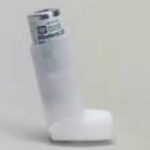Since the ratification of the Montreal Protocol on Substances that Deplete the Ozone Layer was signed in 1987, chlorofluorocarbon or CFC use has been phased out of the products that consumers use in their homes every day. The ozone damaging substances are still being used in many commercial applications, including lubricants, portable fire extinguishers and pesticides. To reduce these remaining CFCs, you may have to find the environmental activist within.
CFC Origin
CFCs were created in 1928 and heavily legislated in 1987, according to the Colorado Department of Public Health and Environment. During the 59 years of free use around the world, CFCs had become a staple in just about every industry and a part of thousands of products found in homes and used by businesses. Solvents, pesticides, propellants, food packages, freon and foam insulators are just some of the ways that CFCs were used (Reference 2). In the decades since the Montreal Protocols, the chemicals have been phased out of many products and practices. The first applications were banned in 1978 were CFCs used in spray cans. But many people can still find the chemicals in use within their workplace and by some of the companies that are patronized for services.
Watch Out for Black Market Products
The World Resources Institute describes a phenomenon occurring in the United States, China, Russia and other developed countries. Facilities in China and Russia are the origins of black market CFCs that are pushed throughout the U.S. and other nations. You can reduce the use of CFCs by closely considering your purchases. Look for any spray can that contains chlorofluorocarbons in the ingredients list. Ask to inspect any freon packaging before it is installed by professionals, as these are other CFCs that may be bought off the black market.
Spread the Word on Alternatives
Many companies that require industrial lubricants, portable extinguishers and pesticides still use CFCs as propellants in the product dispensers. Inquire at your workplace and some of the businesses that you frequent regularly. This includes the dry cleaners, bakeries, mechanic, HVAC repair service and others. The EPA has a list of the CFC products alongside possible alternatives if they are available. Print the list and use it to start a dialogue about their CFC use and how to reduce it.
Use Your Purchase Power
Companies that refuse to reduce the CFC use often don’t respond until profits are at stake. You as a consumer have the power to effect change by boycotting products from companies who use CFCs when an alternative is available. Use your social networking contacts to spread the word. Soon, the company will get the message. Actually, just refusing to buy a product from such a company is a small step toward reducing CFC use. You can also get rid of appliances, automobiles and equipment that is more than 15 years old. Items made until the early 1990s, especially the things that use refrigeration, will likely have CFCs in them.
References:
“Benefits of CFC Phaseout.” U.S. Environmental Protection Agency.
“Ozone Science: The Facts Behind the Phaseout.” U.S. Environmental Protection Agency.

